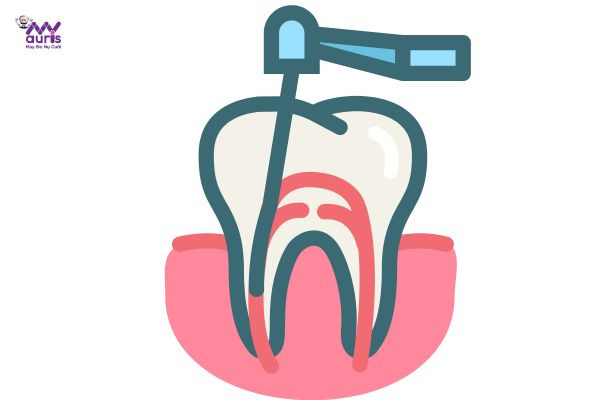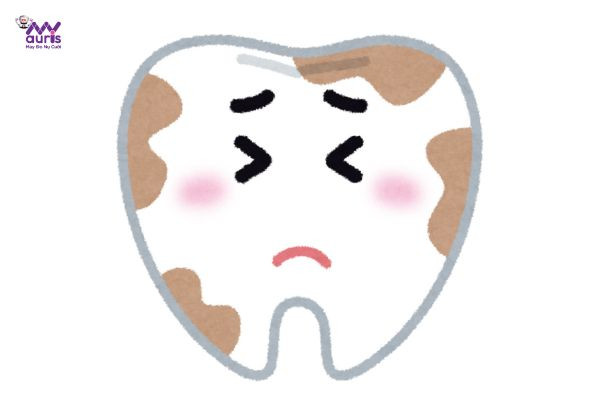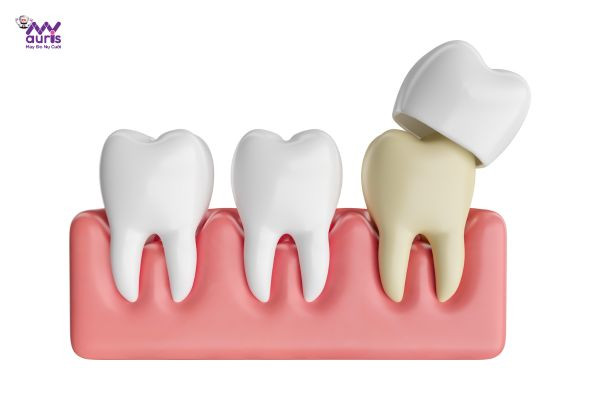Teeth with trauma or severe infection due to disease are cases that require root canal treatment to avoid infection and impact on neighboring teeth. However, the dental pulp is the life source for the tooth, so many people wonder whether after root canal treatment, they should be covered with porcelain. However, whether or not porcelain should be covered after root canal treatment depends on each person’s condition. To better understand this issue, let’s find out with My Auris through the following article.
Should dental root canal treatment be covered with porcelain?
Root canal treatment is not required to be covered with porcelain, however, porcelain coating helps strengthen the original tooth and ensures more effective chewing. For teeth that are injured, have large chips, are severely infected due to disease, or are constantly in pain, uncomfortable, and unable to eat or drink, root canal treatment is the only way to help preserve the real tooth and resolve the situation. It is known that the dental pulp is the lifeblood of the tooth that helps the tooth survive and remain healthy. Once the root canal is treated and the root canal is removed, the tooth is considered dead.
Therefore, the teeth now become brittle, no longer as strong as before. At this time, not only does the risk of breakage increase, but it also interferes with chewing. Therefore, doctors often recommend that customers be covered with porcelain after root canal treatment to ensure long-term durability of their teeth.

What is root canal treatment? Why do we need root canal treatment?
The dental pulp is a collection of organizations including nerves inside the tooth and blood vessels. They bind together to nourish strong teeth. However, during eating or living, teeth can become diseased or injured. At this time, the tooth can crack or break, allowing bacteria to enter the tooth pulp, leading to infection.
Depending on the level of inflammation, the symptoms of pain, shaking, bleeding,… vary. If the inflammation is mild, most doctors prescribe treatment with medication and care to help promote self-healing and remineralization of the teeth.
However, in cases of pulpitis, teeth have large cavities or cracks that greatly affect the pulp, forcing the doctor to treat the tooth as soon as possible. This prevents the infection from spreading, protects neighboring teeth and reduces pain and discomfort.
Pulpitis is an irreversible disease, so early root canal treatment is beneficial for oral health. If you let the condition persist, it will cause serious complications and treatment may no longer be effectiveher. At this time, the best way is to remove the tooth.

Benefits of porcelain coating after root canal treatment
After root canal treatment, the Doctors advise customers to have porcelain crowns because of the following benefits:
Limits broken and brittle teeth
Once the pulp in the tooth is removed, the toughness and hardness of the tooth will rapidly decrease. At this time, when eating and drinking, if you are not careful, your teeth can easily break or crack. Therefore, porcelain coating is like a hard outer shell, protecting the real teeth inside, even if there is strong impact, it will not be affected.
Increase chewing ability for teeth
Root canal treated teeth become hard and brittle, so many people fear that their teeth will break when eating and drinking. At that time, you often abstain from many things, especially foods that are hard, chewy, and flexible. After being covered with porcelain, especially high-quality, high-quality porcelain teeth will increase the ability to chew and chew without blackening the gum line. The lifespan of high-quality, high-quality porcelain teeth is on average 20-25 years, and can even last longer if properly cared for and protected.
Prevention of oral diseases
Teeth after root canal treatment will be hollow on the inside, so it is easy for food to get pushed in during eating. If oral hygiene is not clean, infection will increase and disease will arise.
If teeth that have been treated with root canal treatment are weak, if the disease occurs again, the tooth can only be completely removed. Therefore, porcelain crown is like a “coat” that protects the real tooth pulp and prevents bacteria from attacking. At the same time, porcelain is an inert material and has anti-adhesion properties, thus limiting plaque accumulation. From there, protect teeth from disease and prevent disease recurrence.
Brings high aesthetics
After root canal, teeth often change color and become less aesthetically pleasing. This is easily noticeable in the anterior teeth areas. Because the tooth after the root canal is darker than other teeth because there are no more blood vessels to nourish it.
Porcelain teeth are white, clear, natural and are shaped like real teeth on the outside to help ensure aesthetics during communication.

The process of root canal treatment and porcelain crowns
Root canal treatment and porcelain crowns are not too complicated so it does not take up much of the customer’s time. At the same time, during the procedure, the doctor uses anesthesia so it does not cause pain or discomfort for customers.
The process of root canal treatment and ceramic coating follows these steps:
Step 1: Dental examination and examination
The doctor will examine After that, the doctor will prescribe an X-ray or CT Cone Beam to observe the tooth structure in detail, determine the location and severity of pulp inflammation, and from the examination results, the doctor will advise and plan appropriate treatment.
Step 2: Oral hygiene, anesthesia
Before treatment, the doctor will clean the teeth and clean the teeth to avoid infection during operation. After cleaning the teeth, the doctor will give local anesthesia in the area to be treated.
Step 3: Place the rubber base
After anesthesia, the doctor places a rubber sole to ensure the area around the tooth is always clean and dry. If not placed, the constantly moist environment of the mouth increases the risk of infection, making treatment difficult.
Step 4: Root canal treatment
Doc The doctor needs to create a small passage from the outside of the tooth into the root canal with a specialized dental drill. The force of the drill is enough to create a small hole to open the pulp and determine the length of the root canal.
The doctor uses a specialized suction tool to enter the root canal to suck out all the infected pulp tissue any inflamed or necrotic pulp.
Step 5: Seal the root canal
After removing the pulp, the doctor will seal the root canal with specialized dental resin to prevent bacteria and food from entering the root canal.
Step 6: Grind the tooth to the porcelain layer
If the customer agrees to cover the tooth with porcelain after root canal treatment, next, the doctor will grind the tooth into a pulp with the appropriate ratio. During the grinding process, the doctor still uses anesthetic so it does not cause any discomfort or pain.
Step 7: Take an impression of the jaw and install temporary teeth. justify;”>Step 8: Install porcelain teeth
After the porcelain teeth are completely crafted, the technician will bring them to the dentist and try and install them on the customer’s teeth. At this time, the customer feels and checks the teeth to see if they are comfortable or not. If there are no problems, the doctor will fix the porcelain teeth with specialized dental glue.
In cases where adjustment is needed, the technician will take notes and adjust the teeth accordingly. And make an appointment with the customer to install the teeth when the adjustment is complete.

Some notes when treating root canals and porcelain crowns
When performing root canal treatment and porcelain crowns, each person needs to pay attention to the following things:
- Choose a reputable dentist, ensuring the doctor’s skills, the quality of porcelain teeth, and treatment. sterile condition.
- After porcelain crown, teeth are carefully cared for, combined with the use of toothbrushes, dental floss, salt water, and mouthwash to increase cleaning effectiveness.
- When eating, limit foods that are too hard or too chewy. Although porcelain teeth are hard and strong, they are not as flexible as real teeth, so you need to pay attention when chewing to prolong the life of your teeth.
- Regular dental check-ups monitor oral health and porcelain teeth.

Above is the information aboutwhether root canal treatment should be crowned with porcelain, hopefully everyone will have more useful knowledge and experience about dentistry If you still have any concerns, please contact My Auris dentistry immediately for advice and to schedule an examination and dental check-up as soon as possible. relative”>





